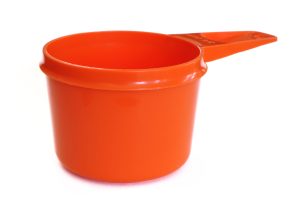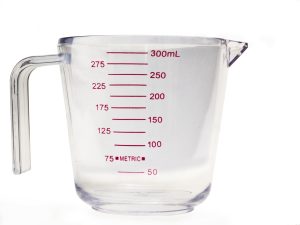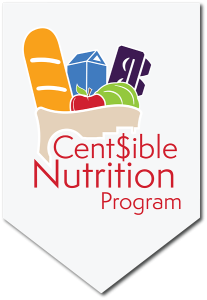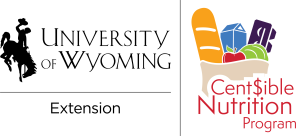Making homemade meals is one of the best things you can do for your health and budget. When you cook at home, you control what goes into your food and your portion sizes. You get to decide what seasonings to use and how much, what type of fat to use (if any), and if sugar and salt are actually needed. Cooking from scratch rather than using pre-made foods lets you control the SoFAS in your diet and it is often less expensive than buying boxed mixes and pre-cooked meals.
Making a menu plan is key to making it easy to cook on any day of the week, even with a busy schedule. This section on how to measure ingredients will provide you with additional tools and tips to make homemade meals simple.
How To Measure
Measuring ingredients is key to successful cooking. Using the right utensil will give you better results than estimating amounts or using the wrong measuring utensil.
Dry measuring cups usually come in sets with ¼ cup, ⅓ cup, ½ cup, and 1 cup that stack together. To measure, spoon the ingredient into the correct size of measuring cup. For dry ingredients, level off the top of the cup with the straight edge of a knife or spatula.
Liquid measuring cups are usually clear so that it is easier to measure accurately. They often come in 1-cup, 2-cup, and 4 cup sizes and have a spout for pouring. Markings on the side of the cup indicate measurements, usually at ¼ cup, ½ cup, ¾ cup, and 1 cup. The measurements may also show ounces and/or smaller fractions. To use a liquid measuring cup, set it on a flat surface, such as a countertop or table. Pour in the liquid and check it at eye level, leaving the cup on the flat surface. The liquid should just touch the measurement line.
Measuring spoons usually come in sets with ⅛ teaspoon, ¼ teaspoon, ½ teaspoon, 1 teaspoon, and 1 Tablespoon. Use measuring spoons for small amounts of dry or liquid ingredients. To use a measuring spoon, select the correct size and fill with the ingredient. For dry ingredients, level off the top of the spoon with the straight edge of a knife or spatula. It is a good idea to never measure over the bowl with other ingredients.
Use A Dry Measuring Cup For:
Use A Liquid Measuring Cup For:
- Applesauce
- Brown sugar
- Butter
- Flour
- Peanut butter
- Sour cream
- Sugar
- Yogurt

- Broth
- Juice
- Milk
- Oil
- Sauce
- Water

Use A Dry Measuring Cup For:
- Applesauce
- Brown sugar
- Butter
- Flour
- Peanut butter
- Sour cream
- Sugar
- Yogurt

Use A Liquid Measuring Cup For:
- Broth
- Juice
- Milk
- Oil
- Sauce
- Water


